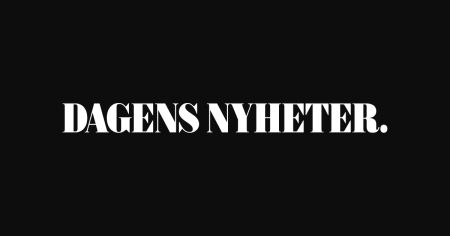Dagens Nyheter, a prominent Swedish daily newspaper, carries a unique punctuation mark – a period – following its name. This seemingly insignificant detail holds a profound historical significance, tracing back to the newspaper’s inception on December 23, 1864. Rudolf Wall, the founder of Dagens Nyheter, deliberately included the period, intending it to convey more than just the paper’s title. He envisioned the punctuation mark to symbolize closure, representing a definitive statement of the day’s events, encapsulating the news within a concise and complete package. This deliberate choice reflects the newspaper’s commitment to delivering factual and conclusive reporting, a legacy that continues to shape its journalistic approach even today. The period, therefore, acts as a constant reminder of the paper’s founding principles and its enduring commitment to journalistic integrity.
This seemingly minor punctuation mark embodies a deeper philosophical understanding of the nature of news and its dissemination. In Wall’s view, news is not an ongoing, amorphous stream of information, but rather a series of discrete events, each with a beginning and an end. The period, in a way, signifies the culmination of the newsgathering process, marking the completion of the cycle from event to report. It suggests a sense of finality and authority, implying that the information presented within the pages of Dagens Nyheter is thoroughly vetted and presented as a complete narrative. This dedication to presenting the news as a finalized account reinforces the newspaper’s commitment to accuracy and comprehensive reporting.
The preservation of this historical punctuation mark signifies Dagens Nyheter’s respect for its heritage and its unwavering adherence to the core values established by its founder. In a rapidly evolving media landscape, characterized by continuous updates and breaking news cycles, the period serves as a symbolic anchor, grounding the publication in its foundational principles. It acts as a visual reminder of the importance of thoroughness and accuracy in journalistic practice, qualities that are often challenged in the pursuit of immediacy. The period, in essence, represents a conscious decision to prioritize the integrity of the news over the pressure to constantly update.
The continued use of the period after Dagens Nyheter also underscores the newspaper’s commitment to its readers. It represents a promise to deliver news that is not merely a fleeting snapshot of events, but a well-rounded and complete account. This commitment to providing a sense of closure with each report fosters trust and credibility with the readership, assuring them that the information presented is not just fragmented pieces of a larger puzzle, but a carefully curated and comprehensive narrative. The period, therefore, acts as a seal of authenticity, assuring readers of the thoroughness and reliability of the information provided.
Beyond its symbolic significance, the period after Dagens Nyheter also serves as a distinctive brand identifier. In a crowded media market, where publications are constantly vying for attention, this unique punctuation mark sets Dagens Nyheter apart, making it instantly recognizable. It acts as a visual cue, instantly connecting the newspaper to its rich history and established reputation. This subtle yet powerful symbol reinforces the brand’s identity and its longstanding commitment to quality journalism, differentiating it from competitors and reinforcing its position as a reliable and respected news source.
In conclusion, the seemingly insignificant period following the name Dagens Nyheter is far more than a mere punctuation mark. It is a potent symbol, laden with historical significance and embodying the newspaper’s enduring commitment to journalistic integrity. It serves as a constant reminder of the newspaper’s founding principles, its dedication to providing comprehensive and accurate reporting, and its unwavering respect for its readership. In a world of ever-evolving media practices, the period stands as a beacon of stability and a testament to the enduring power of journalistic traditions. It is a small detail that speaks volumes about the newspaper’s values, its history, and its enduring commitment to the pursuit of truth and accuracy.














